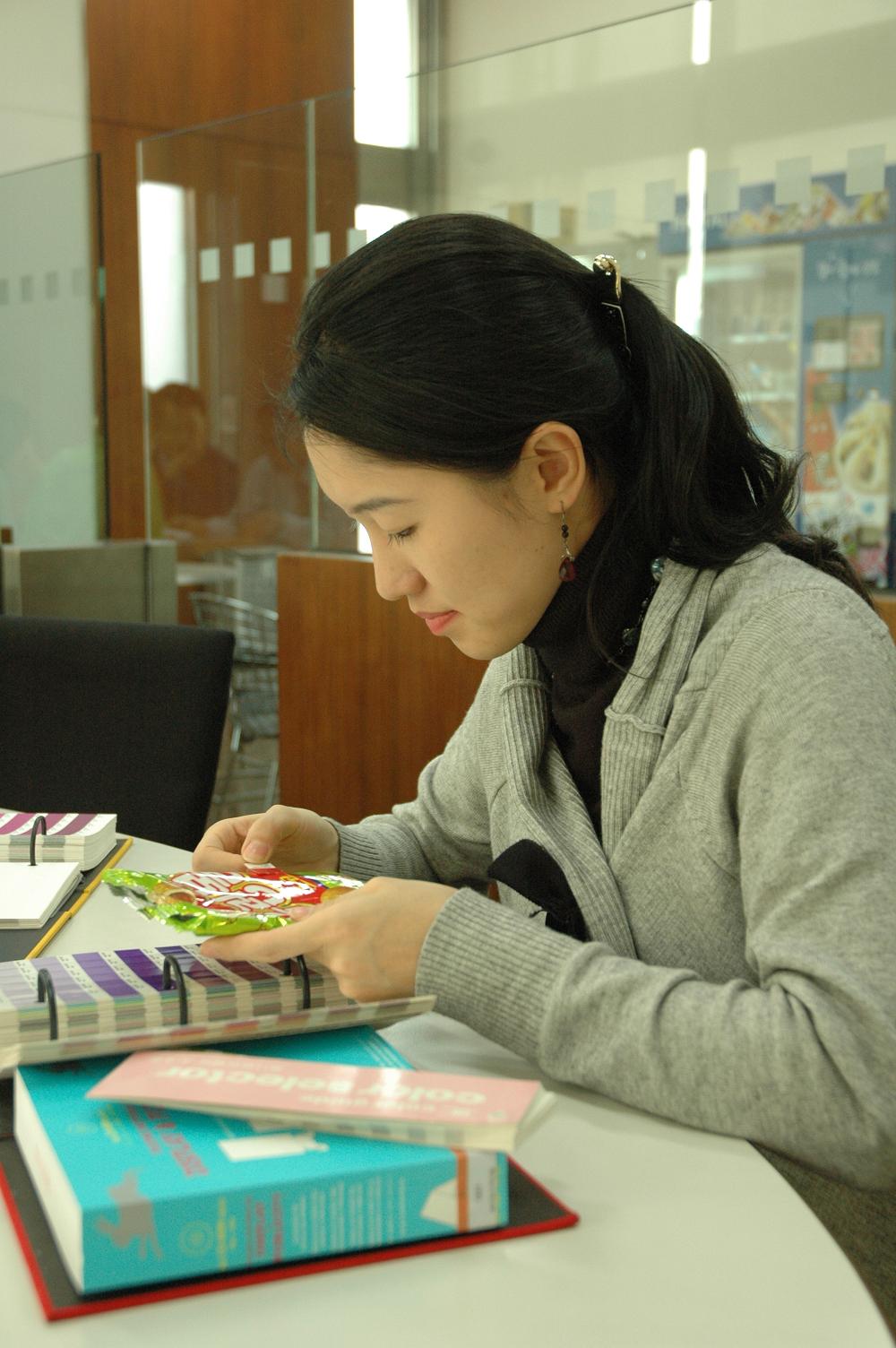A short trip to the package designers’ world

STROLLING ALONG the corridors in a hypermarket, we come across thousands of items patiently waiting for the shoppers’ hands. Although most shoppers may just pick the items on their wish-list without a second thought, a lot of hard work is hidden behind the whole process of package design. They work as a bridge, connecting the actual items inside the package to the consumers.
Package designers’ work
A package designer literally designs the packages which wrap the items such as snacks, cosmetics and daily necessities, etc. “When a project to plan a new item begins, I participate in the project to procure the key information on the item. Through meetings, I exchange design ideas with others and draw some tentative plans for the package. Once the final design of the package is selected, I start working on the computer,” states Ku Hye-yoon (Package Designer at Haitai Confectionery & Foods). It is also the package designer’s job to ascertain every text on the packages so that they don’t get involved in any legal problems. The final design is sent to the printing house for the next stage. “The package designer’s work extends to making feedback with the print designer until the perfect result comes out at the very last stage,” Ku adds.
Becoming a package designer
Most package designers have a bachelor’s degree in visual design. Some large companies such as LG Household & Health Care, Haitai Confectionery & Foods and CJ Corp. provide job training to teach the newly joined workers specific package designing skills but for personal development, they can also learn those skills at private design institutes.
Although classified as designers, this profession does not only require the skill of designing but also the abilities to control various fields package designing entails. While deft dealing with computer designing programs is a chief concern, basic knowledge involving package materials, consumer psychology, food safety and consumer protection laws, the latest trend and social problems should also be considered. “Package designers have to be extremely cautious throughout the entire process of designing. Even the slightest mistake could provoke crucial damage to the company,” Ku confesses. They also have to be alert and always up-to-date. As long as the product is displayed on the shelf, they have to make constant efforts to update and complement the former design.
Present and future of package designing
Among the diverse information an item holds, the most eye-catching information which appeals to a majority of consumers is the visual one. A package design symbolizes an item in the most direct way at the point of purchase. With hypermarkets constantly promoting sales competitions, many corporations have started to reinforce the design team, in order to survive tough sales race among other competitors. The demand for package designers is continuously on the rise.

Food Package Designer
Ku Hye-yoon (Package Designing Team at Haitai)
Food packages especially require highly spectacular visual designs. They have to show realistic images of what’s inside and also, the brand name has to be emphasized. Since the unit prices of food are not as expensive as cosmetics or other daily necessities, foods have to be packed using low cost materials such as vinyl or paper boxes. To make the food look as delicious as possible, red, orange and brown colors are mainly used on food packages. A distinguished sensation of colors is essential to becoming a food package designer.

